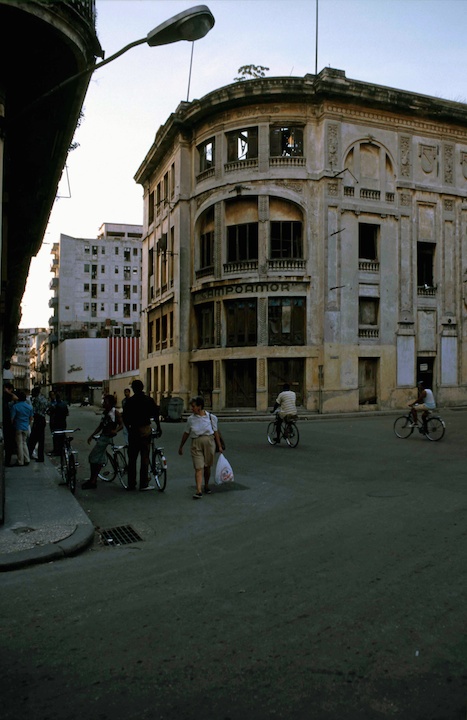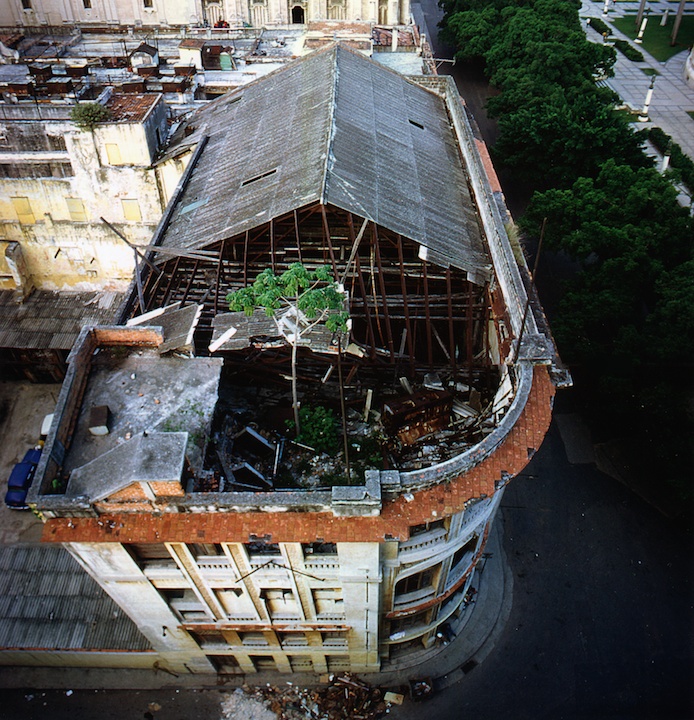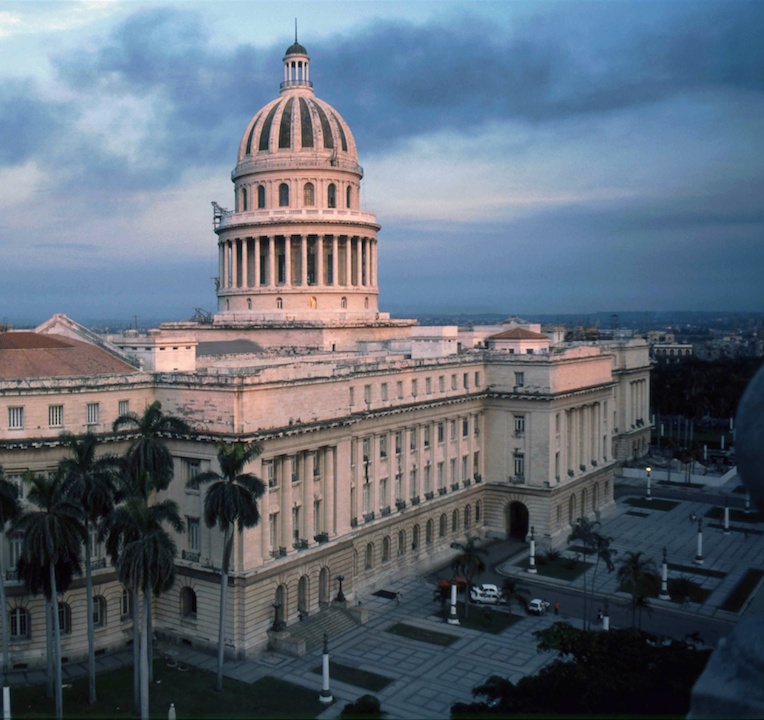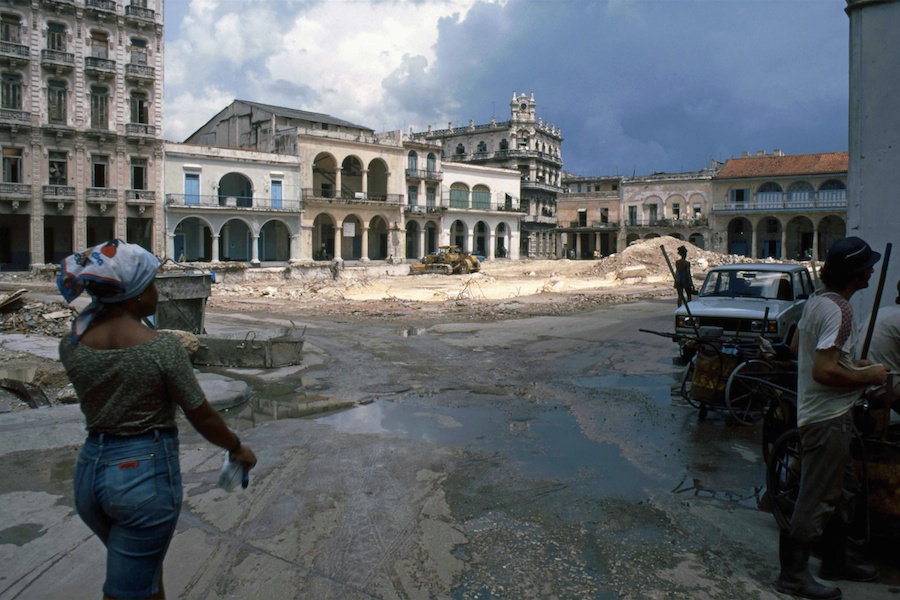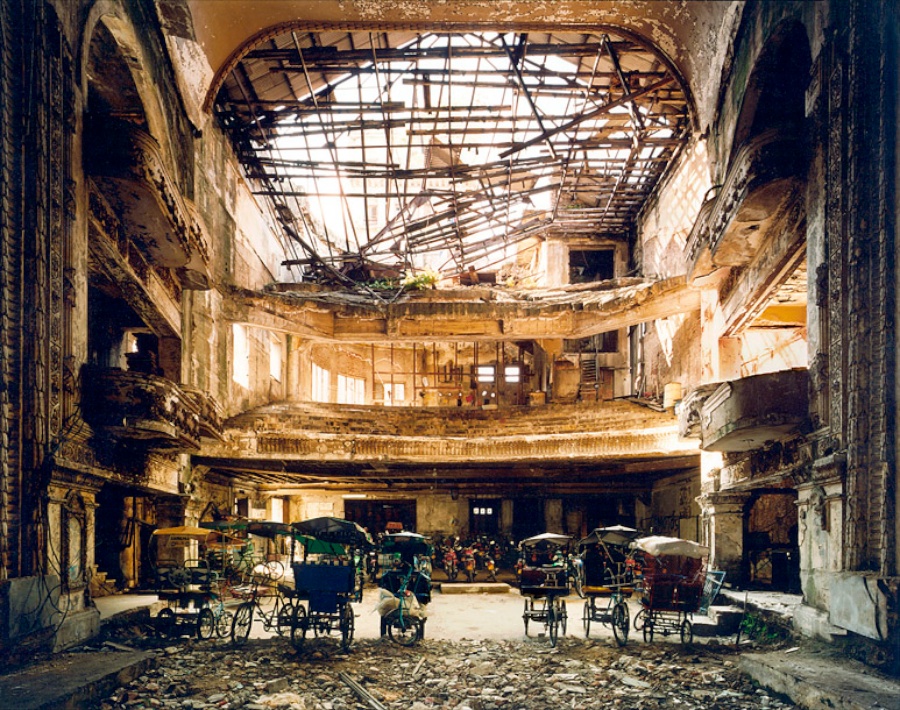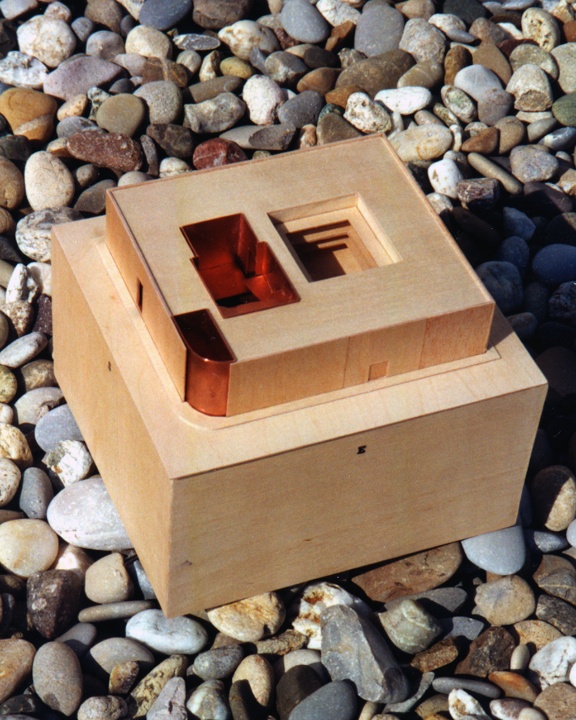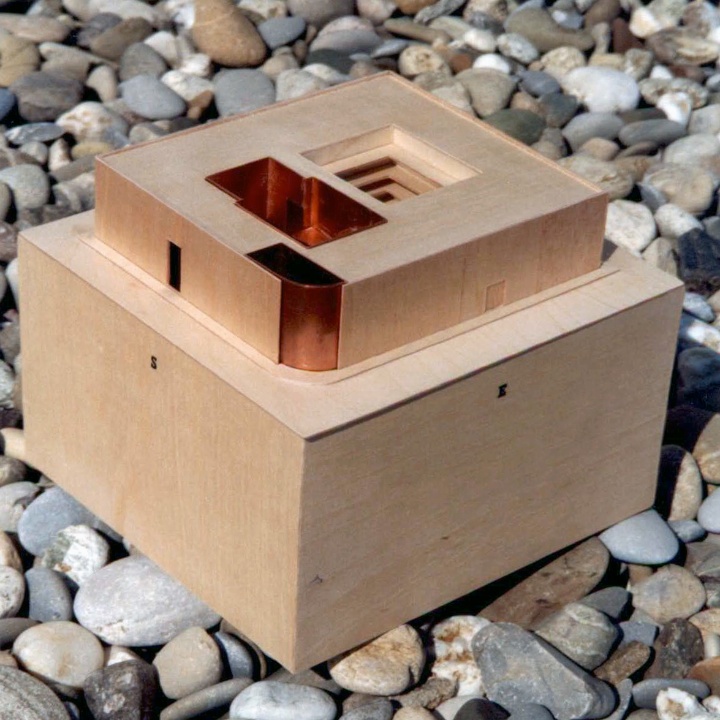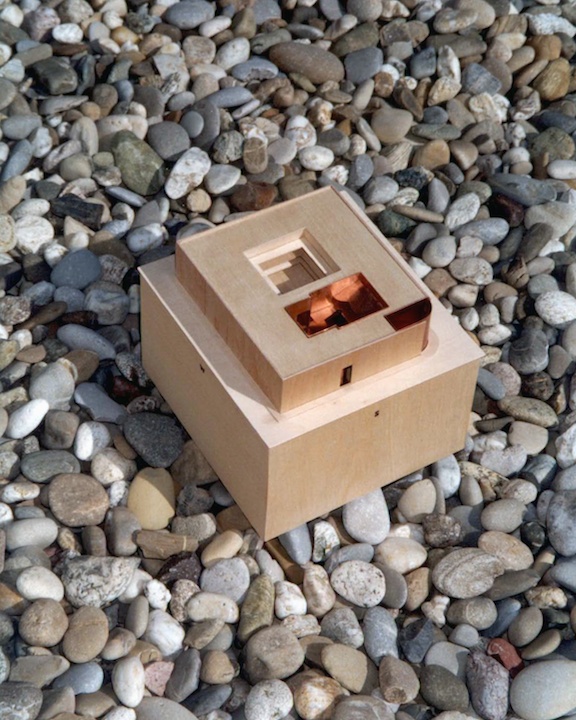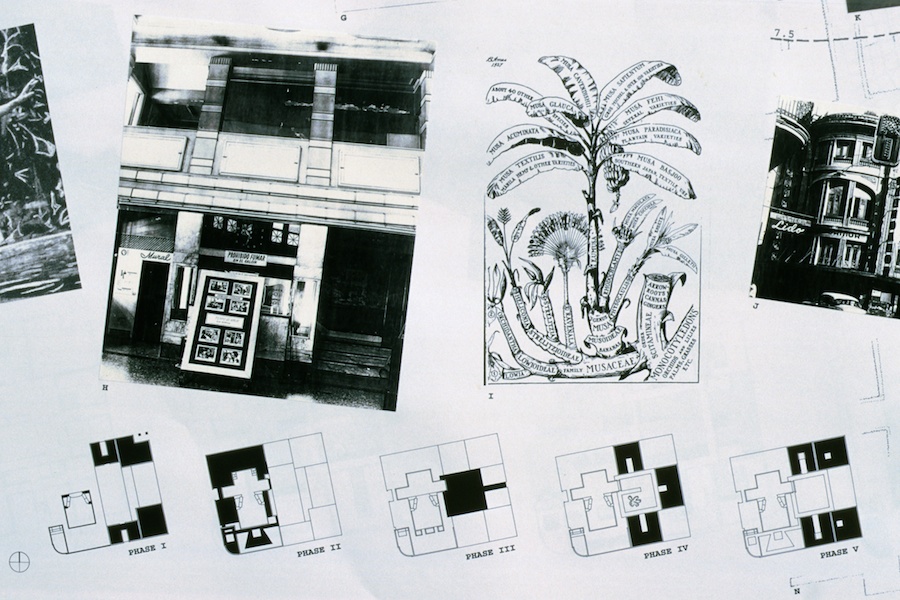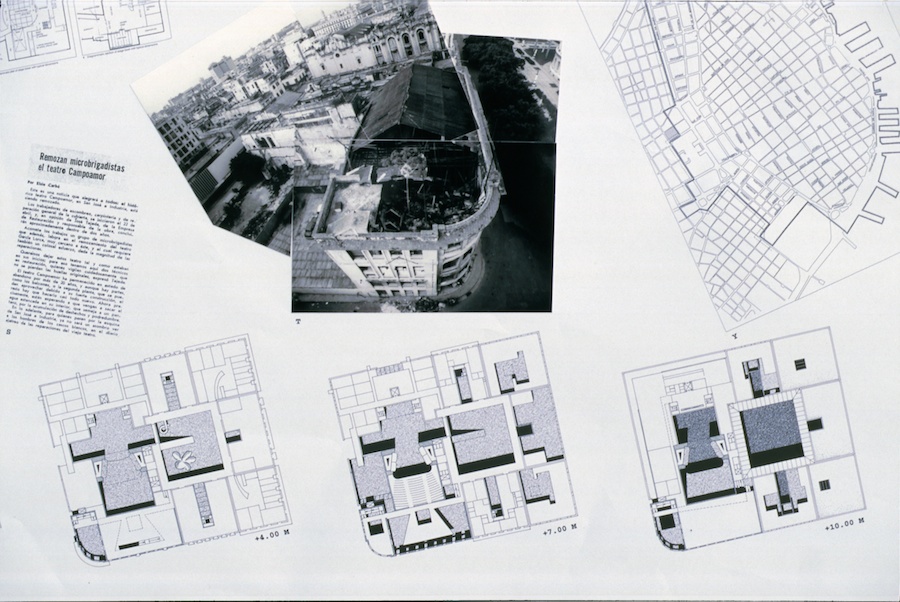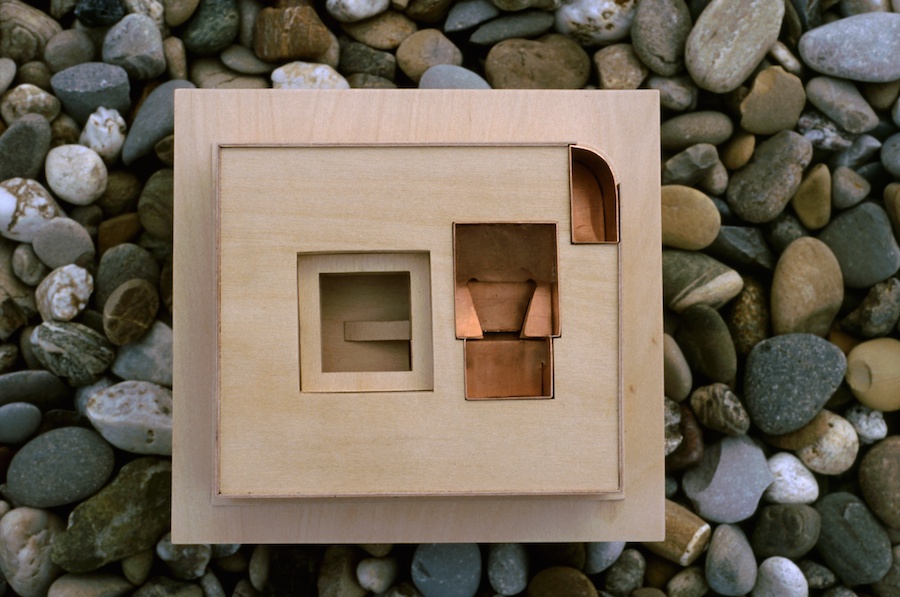Campoamor, Havana
Competition Banana
The incredible banana museum en the new opera house
Enigma del árbol
No había nadie en la calle
La Habana estaba vacía
Solo el guardia del barrio
Con su vieja linterna china
Cuando se oyó un gran ruido
Debajo del asfalto
Que se abrió en dos pedazos
Mientras nacía un árbol
Eran ramas enormes
En espiral al cielo
Perdiéndose en los nubes
Como pasa en los cuentos
Mientras el vecindario
Se asomaba boquiabierto
Haciendo el comentario
Pensando que no era cierto
La negra dijo que Changó
Nos había mandado el castigo
Y el viejo dijo que quizás
Era otro invento del enemigo
Lo cierto es que aquel árbol
Causó tanta sorpresa
Que nadie imaginó el final
A la mañana llegaron
Fotógrafos y oradores
Una muchacha de quince
Y un matrimonio que puso flores
Un tipo se subió pensando
Que una rama llegaba a Miami
Y el barrio le gritó y colgó
Carteles por todas partes
La policía puso barras amarillas
Y luces girando
Y no faltaron los turistas
Entre los que iban llegando
Llegaron los arquitectos
Y los científicos del museo
Mientras que los creyentes
Le daban vueltas por un deseo
Y así fue que se juntaron
Políticos y santeros
La puta y el miliciano
Los hippies y los obreros
Y cuando decidieron justo
Lo que iban a hacer con el árbol
La misma tierra lo tragó
Y solo quedó el espacio
No había nadie en la calle
La Habana estaba vacía
Solo el guardia del barrio
Con su vieja linterna china
Iluminando el asfalto
Con su vieja linterna china
Enigma of the tree
There was no one in the street
Havana was empty
Only the barrio guard
With his old Chinese flashlight
When a great noise was heard
Underneath the asphalt
Which broke into two pieces
As a tree was born
There were enormous branches
In a spiral to the sky
Disappearing into the clouds
Like in fairy tales
While everyone in the neighborhood
Stared open-mouthed
Talking to each other
Thinking it wasn't real
The negra said that Changó
Had sent us a punishment
And the old man said that maybe
It was another invention of the enemy
What's certain is that that tree
Caused so much wonder
That no one could imagine how it would end
In the morning there arrived
Photographers and orators
A girl's fifteenth birthday party
And a wedding complete with flowers
One guy climbed up thinking
That a branch might take him to Miami
And the barrio shouted and hung
Posters everywhere
The police put up yellow barriers
And whirling lights
And there was no lack of tourists
In the crowd that kept on arriving
The architects arrived
And the scientists from the museum
While the believers
Spun around making wishes
And so it was that there came together
Politicians and santeros
The whore and the soldier
The hippies and the workers
And when they had decided
Just what to do with the tree
The same earth swallowed it
And there remained only a hole
There was no one in the street
Havana was empty
Only the barrio guard
With his old Chinese flashlight
Illuminating the asphalt
With his old Chinese flashlight
Lyrics by Carlos Varela,
Monedas al Aire, © ℗ 1993
QbaDisc, New York
Campoamor
Preface
Havana was founded early in the sixteenth century by the Spanish and was declared the capital of Cuba in 1607. From the very beginning, Havana was important primarily because of its strategic position in the Straits of Florida. It became the third most populous city in the New World with a bustling port which was also famous as a fortress.The city continued to grow during the 19th century, metamorphosing from a transit point in the Spanish trade routes to an export port thriving on the wealth of the island itself. Sugar, tobacco, coffee, and rum were the chief exports shipped out of Havana's harbor.
Havana preserves more of its historic colonial legacy than any other city in the Americas. In 1982, UNESCO declared La Havana Vieja, or Old Havana, a World Heritage Site.
The site
The competition site is situated just outside the boundaries of the protected area of Old Havana and is thus exempt from the regulations which bind the UNESCO Heritage Site. However, one should not contemplate divorcing this site from its historical surroundings, but rather consider the creation of an architectural dialogue between the site with the adjacent historical facades on San Jose, opposite the Capitol. On the site, one can currently find the remaining parts of a famous theatre. This theatre was built as the Teatro Albisu in 1870. The compactly designed theatre had a capacity of 1,600 chairs on the lower level and 800 more on the balconies. Shortly after a fire in 1918, it was rebuilt and renamed Teatro Campoamor. This popular theatre, where many famous artists performed, was destroyed during a fire in 1966. An attempt was made in 1987 to restore the theatre but failed. Since that time, the building has been abandoned and is currently used as a parking garage for bicycles. The northern part of the block faces an important pedestrian shopping street, San Rafael, which is an extension of Calle Obispo. (X. sheet 2)Phase I
The current auditorium will be disassembled and restored in its original form in the middle of the empty lot. The street facades of the Teatro Campoamor and the interior of the entry area on the corner of San Jose and Industria will be restored. The existing shop on San Jose will be temporarily used as an educational exhibition on the restoration of Habana Vieja in general and more specifically on the restoration of Teatro Campoamor. During construction, the building site will also double as a museum/tourist attraction. The proceeds gathered from the entry fees will be used to cover part of the building costs. The hall on the corner of San Jose and Consulado will be used as a canteen where meals will be served for the construction workers. The shops on San Rafael will remain as they are.Phase II
All the essential serving areas for the opera house will be built on the remaining parts of the empty lot and encompass the restored auditorium. Looking in through the windows of the preserved original facade, one can see the new multi-levelled public area which will include the foyer. This new interior will be done in an contemporary style to achieve the effect of a modern piece of art encased in a timeless historical frame. The new facades, which will be erected as the extension of the old facade, will also have a contemporary image: the designs for the contemporary facades are carefully chosen to interact with the scale and the architectural styles of its surroundings.Phase III
The current building which occupies the centre of the block will be demolished. Next, the peripheral buildings will be extended in order to change the irregular space opened up by the removal of the central building into a rectangular atrium. At the street level a connection will be made towards Consulado, in order to connect this atrium with the atrium of the Centro Gallego, which acts as the foyer of the Gran Teatro de la Habana or Tacon Theatre. In this atrium, one banana tree will be planted.Phase IV
The entry areas of the new museum will flank the main entrance to the atrium. A ramp will be constructed, starting from the centre of the atrium at the street level and leading to a walkway ringing the atrium at the first floor level. This walkway will provide access to the various halls of the museum. This walkway also connects to the side stage of the opera house, which in turn, becomes part of the museum exhibition.Phase V
The top levels (first and second floor) of the remaining peripheral buildings which surround the atrium will be used as administrative office suites and as apartments for visiting performers and students. The apartments can be reached by existing staircases and will be connected to the opera house by walkways constructed on the upper sides of the atrium.Enigma
By preserving the best of the past and adding this to the best of the present, the project will serve as a beacon of hope for the people of Cuba which will light their way towards a better future. By making the vision inspired by this competition come true, the theatre and the museum will support the efforts being made to reanimate Havana.Although the dream tree vanished "and there remained only a hole" in the "Enigma of the Tree", one must not forget that it brought the people together. The "hole" is not the end of the dream but only the beginning: a "hole" is the place where a seedling starts to grow.
Design team: Kruunenberg Van der Erve Architecten

